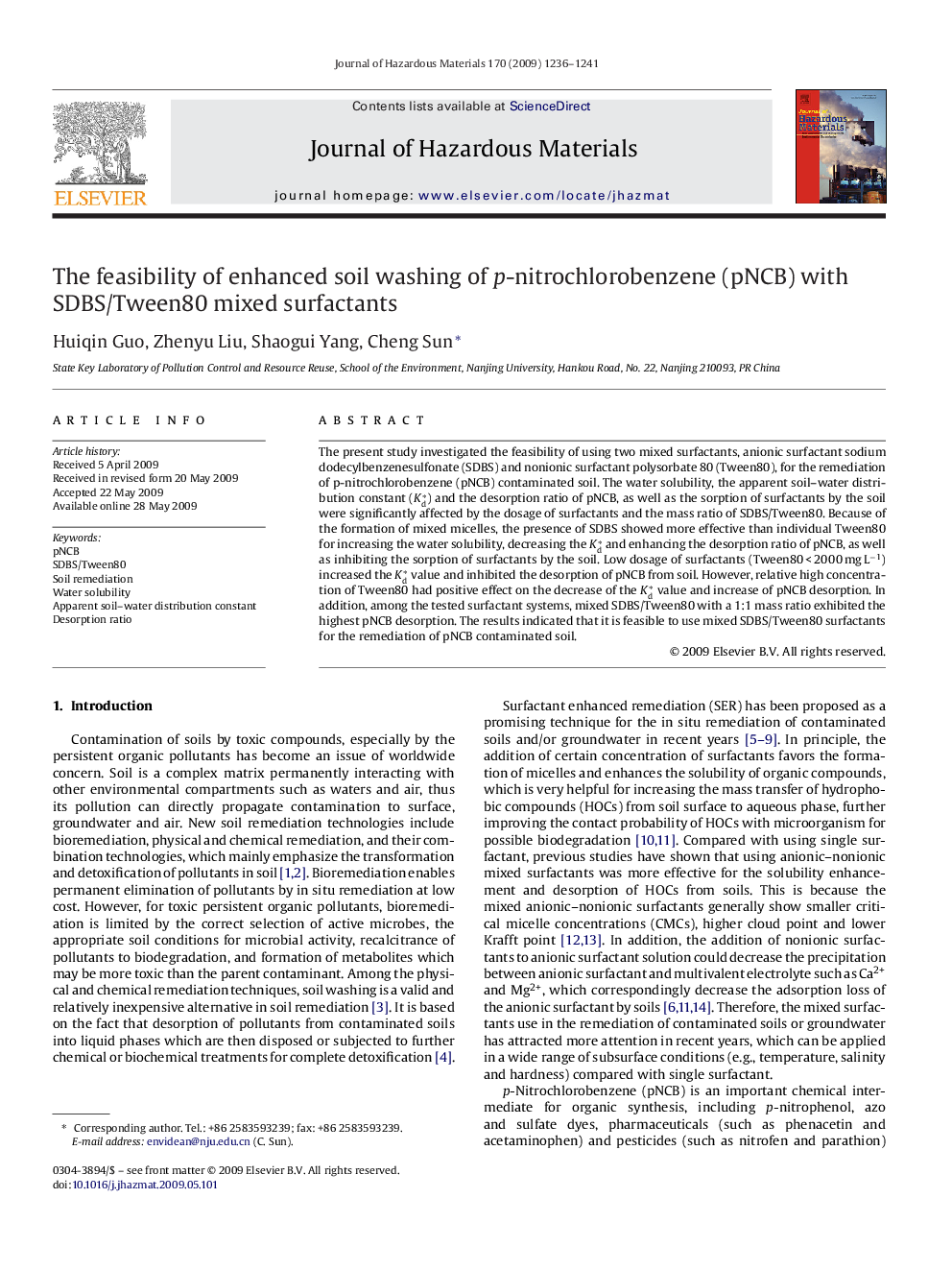| Article ID | Journal | Published Year | Pages | File Type |
|---|---|---|---|---|
| 581295 | Journal of Hazardous Materials | 2009 | 6 Pages |
The present study investigated the feasibility of using two mixed surfactants, anionic surfactant sodium dodecylbenzenesulfonate (SDBS) and nonionic surfactant polysorbate 80 (Tween80), for the remediation of p-nitrochlorobenzene (pNCB) contaminated soil. The water solubility, the apparent soil–water distribution constant (Kd*) and the desorption ratio of pNCB, as well as the sorption of surfactants by the soil were significantly affected by the dosage of surfactants and the mass ratio of SDBS/Tween80. Because of the formation of mixed micelles, the presence of SDBS showed more effective than individual Tween80 for increasing the water solubility, decreasing the Kd* and enhancing the desorption ratio of pNCB, as well as inhibiting the sorption of surfactants by the soil. Low dosage of surfactants (Tween80 < 2000 mg L−1) increased the Kd* value and inhibited the desorption of pNCB from soil. However, relative high concentration of Tween80 had positive effect on the decrease of the Kd* value and increase of pNCB desorption. In addition, among the tested surfactant systems, mixed SDBS/Tween80 with a 1:1 mass ratio exhibited the highest pNCB desorption. The results indicated that it is feasible to use mixed SDBS/Tween80 surfactants for the remediation of pNCB contaminated soil.
